

Week One Creative Writing Lesson Plans: Expert Guide
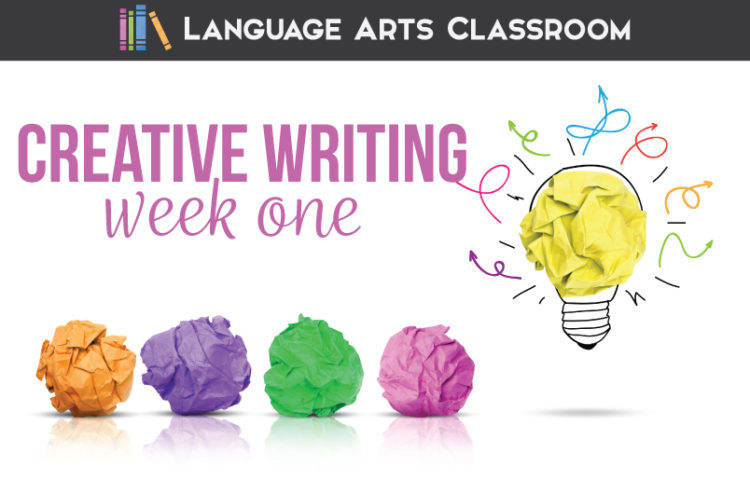
Looking for creative writing lesson plans? I am developing creative writing lesson ideas!
I’ve written and revamped my creative writing lesson plans and learned that the first week is vital in establishing a community of writers, in outlining expectations, and in working with a new class.
What are some good creative writing exercises?
Some good creative writing exercises include writing prompts, free writing, character development exercises, and fun writing games.
The first week, though, we establish trust—and then we begin powerful creative writing exercises to engage young writers and our community.
How can add encouragement in creative writing lesson plans?
I’ve found students are shy about writing creatively, about sharing pieces of themselves. A large part of the first week of class is setting the atmosphere, of showing everyone they are free to create. And! These concepts will apply to most writing lesson plans for secondary students.
Feel free to give me feedback and borrow all that you need! Below, find my detailed my day-by-day progression for creative writing lesson plans for week one.

Creative Writing Lesson Day One: Sharing my vision
Comfort matters for young writers. I’m not a huge “ice breaker” type of teacher—I build relationships slowly. Still, to get student writing, we must establish that everyone is safe to explore, to write, to error.
Here are some ideas.
Tone and attitude
For day one with any lesson plan for creative writing, I think it is important to set the tone, to immediately establish what I want from my creative writing students. And that is…
them not to write for me, but for them. I don’t want them writing what they think I want them to write.
Does that make sense? Limitations hurt young writers. My overall tone and attitude toward young writers is that we will work together, create and write together, provide feedback, and invest in ourselves. Older kiddos think that they must provide teachers with the “correct” writing. In such a course, restrictions and boundaries largely go out the window.
Plus, I specifically outline what I believe they can produce in a presentation to set people at ease.
The presentation covers expectations for the class. As the teacher, I am a sort of writing coach with ideas that will not work for everyone. Writers should explore different methods and realize what works for them. First, not everyone will appreciate every type of writing—which is fine. But as a writing community, we must accept that we may not be the target audience for every piece of work.
Therefore, respect is a large component of the class. Be sure to outline what interactions you find acceptable within your classroom community.
Next, as their writing coach, I plan to provide ideas and tools for use. Their job is to decide what tools work for their creative endeavors. My overall message is uplifting and encouraging.
Finally, when we finish, I share the presentation with students so they can consult it throughout the semester. The presentation works nicely for meet-the-teacher night, too!
After covering classroom procedures and rules, I show students a TED Talk. We watch The Danger of a Single Story by Chimamanda Adichie. My goal is to show students that I don’t have a predetermined idea concerning what they should write. This discussion takes the rest of the class period.
Establishing comfort and excitement precedents my other creative writing activities. Personalize your “vision” activities for your lessons in creative writing. Honestly, doing this pre-work builds relationships with students and creates a positive classroom atmosphere.
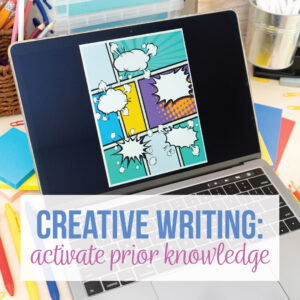
Creative Writing Lesson Day Two: Activating prior knowledge
Students possess prior knowledge concerning creative writing, but they might not consider that. Students should realize that they know what constitutes a great story. They might not realize that yet. An easy lesson plan for creative writing that will pay off later is to activate prior knowledge. Brainstorm creative, memorable, unforgettable stories with students. Share your thoughts too! You will start to build relationships with students who share the same tastes as you (and those that are completely different!).
Activation activity
During this activity, I want to see how students work together, and I want to build a rapport with students. Additionally, activating prior knowledge provides a smooth transition into other creative writing activities.
This creative writing activity is simple:
I ask students to tell me memorable stories—books, play, tv shows, movies—and I write them on the board. I add and veto as appropriate. Normally doing these classroom discussions, we dive deeper into comedies and creative nonfiction. Sometimes as we work, I ask students to research certain stories and definitions. I normally take a picture of our work so that I can build creative writing lessons from students’ interests.
This takes longer than you might think, but I like that aspect. This information can help me shape my future lessons.
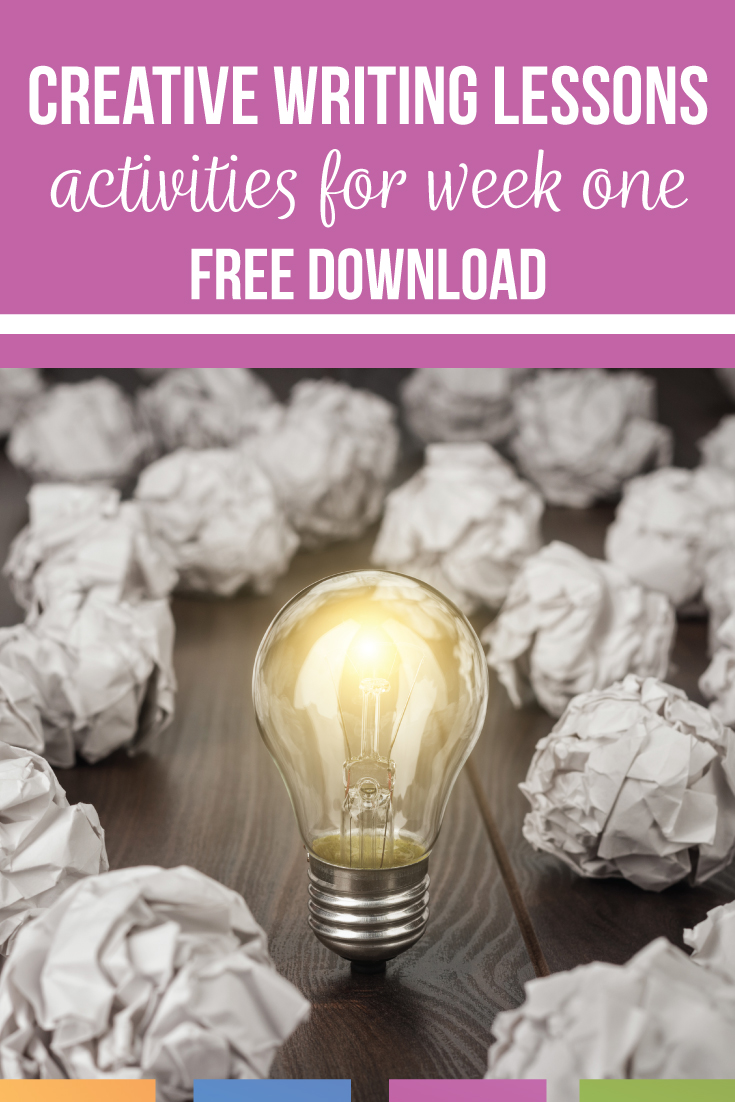
With about twenty minutes left in class, I ask students to form small groups. I want them to derive what makes these stories memorable. Since students complete group and partner activities in this class, I also watch and see how they interact.
Students often draw conclusions about what makes a story memorable:
- Realistic or true-to-life characters.
- Meaningful themes.
- Funny or sad events.
All of this information will be used later as students work on their own writing. Many times, my creative writing lessons overlap, especially concerning the feedback from young writers.

Creative Writing Lesson Day Three: Brainstorming and a graphic organizer
From building creative writing activities and implementing them, I now realize that students think they will sit and write. Ta-da! After all, this isn’t academic writing. Coaching creative writing students is part of the process.
Young writers must accept that a first draft is simply that, a first draft. Building a project requires thought and mistakes. (Any writing endeavor does, really.) Students hear ‘creative writing’ and they think… easy. Therefore, a first week lesson plan for creative writing should touch on what creativity is.
Really, creativity is everywhere. We complete a graphic organizer titled, “Where is Creativity?” Students brainstorm familiar areas that they may not realize have such pieces.
The ideas they compile stir all sorts of conversations:
- Restaurants
- Movie theaters
- Amusement parks
By completing this graphic organizer, we discuss how creativity surrounds us, how we can incorporate different pieces in our writing, and how different areas influence our processes.

Creative Writing Lesson, Days Four and Five: Creative Nonfiction
Students need practice writing, and they need to understand that they will not use every word they write. Cutting out lines is painful for them! Often, a lesson plan for creative writing involves providing time for meaningful writing.
For two days, we study and discuss creative nonfiction. Students start by reading an overview of creative nonfiction . (If you need mentor texts, that website has some as well.) When I have books available, I show the class examples of creative nonfiction.
We then continue through elements of a narrative . Classes are sometimes surprised that a narrative can be nonfiction.
The narrative writing is our first large project. As we continue, students are responsible for smaller projects as well. This keeps them writing most days.
Overall, my students and I work together during the first week of any creative writing class. I encourage them to write, and I cheer on their progress. My message to classes is that their writing has value, and an audience exists for their creations.
And that is my week one! The quick recap:
Week One Creative Writing Lesson Plans
Monday: Rules, procedures, TED Talk, discussion.
Tuesday: Prior knowledge—brainstorm the modeling of memorable stories. Draw conclusions about storytelling with anchor charts. Build community through common knowledge.
Wednesday: Graphic organizer.
Thursday and Friday: Creative nonfiction. Start narrative writing.
Students do well with this small assignment for the second week, and then we move to longer creative writing assignments . When classesexperience success with their first assignment, you can start constructive editing and revising with them as the class continues.
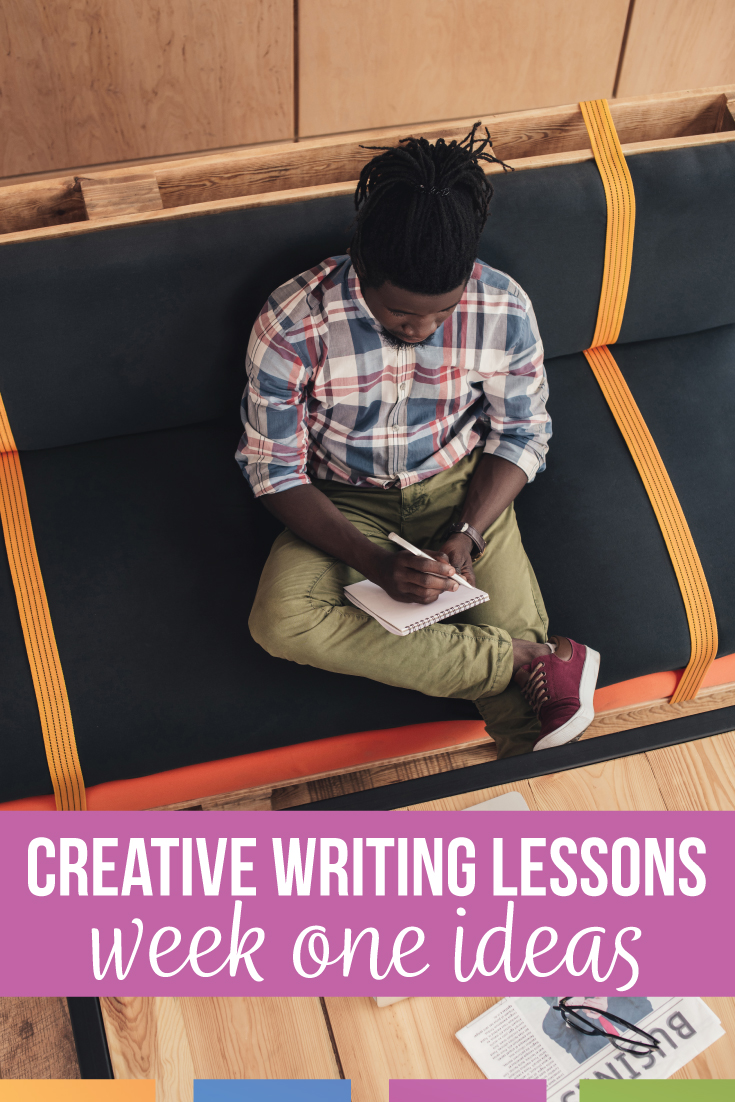
These creative writing activities should be easy implement and personalize for your students.
Would you like access to our free library of downloads?
Marketing Permissions
We will send you emails, but we will never sell your address.
You can change your mind at any time by clicking the unsubscribe link in the footer of any email you receive from us, or by contacting us at [email protected] . We will treat your information with respect. For more information about our privacy practices please visit our website. By clicking below, you agree that we may process your information in accordance with these terms.
We use Mailchimp as our marketing platform. By clicking below to subscribe, you acknowledge that your information will be transferred to Mailchimp for processing. Learn more about Mailchimp’s privacy practices.
Are you interested in more creative writing lesson ideas? My Facebook page has interactive educators who love to discuss creative writing for middle school and high school creative writing lesson plans. Join us!

creative writing creative writing activities

Teach Creative Writing In High School With 10 Fun Activities
Creative writing is a meaningful aspect of literature that mandates you to utilize your expertise, ingenuity, and story to depict a critical message, emotion, or plot. It defies the traditional bounds of other forms of writing and is completely subjective to our preferences and experiences. In creative writing, it’s all about imaginativeness!
Using creative imagination and originality to convey feelings and concepts in a unique way is at the heart of creative writing. Simply stated, it’s about infusing your own ‘flair’ into your writing, moving beyond academic or other technical kinds of literature.
In this post, we will explore the various activities which would be advantageous for a high schooler who wishes to indulge in creative writing!

What Happens When Creative Writing Is Put To Use?
Creative writing is any form of writing that deviates from traditional professional, investigative journalism, educational, or technological forms of literature. It is typically distinguished by emphasizing narrative craft, character development, literary tropes, or various poetic traditions.
Here are the few ways how high schoolers can benefit from creative writing –
1. Imagination
When you write creatively, you expand your imagination by creating new environments, scenarios, and characters. This way, you are also boosting and stretching your imagination, as well as “thinking out of the box.” This allows you to concentrate your energy on many other things and improve your ability to find fresh ideas and alternatives to problems you’re having. Whether you’re a researcher or a businessman, creative writing will increase your imagination and help you think more creatively, and push the boundaries.
2. Empathy and Communications skills
When you create characters, you’ll be constructing emotions, personalities, behaviors, and world views that are distinct from your own. Writers must conceive personalities, emotions, places, and walks of life outside of their own lives while creating universes with fictional characters and settings.
This can give children a good dose of empathy and understanding for those who aren’t like them, who don’t live where they do or go through the same things they do daily. Writers are better equipped to communicate when they have a greater understanding of other points of view. They can come up with creative ways to explain and debate subjects from multiple perspectives. This ability is crucial in both professional and personal situations.
3. Clarification of Thoughts
Creating structures in creative writing allows you to organize your impressions and emotions into a logical procedure. You may express both your thoughts and your sentiments through creative writing. For example, if you’re a marketing executive, you could create a short tale in which your clientele reads your promotional emails. You can guess what they’re up to, where they’re seated, what’s around them, and so on.
This enables you to focus on the language and strategies you employ. Alternatively, if you’re a technical writer writing on a new desktop platform, you could create a creative scenario in which a user encounters a problem.
4. Broadens Vocabulary and gets a better understanding of reading and writing
You’ll learn a larger vocabulary and a better understanding of the mechanics of reading and writing as you begin to practice writing exercises regularly. Even if you’re writing a budget report, you’ll know when rigid grammar standards work and when they don’t, and you’ll know what will make your writing flow better for your readers. Exploring different ways of expressing yourself when writing creatively allows you to extend your vocabulary.
You’ll notice a change in your use and range of language as you improve your writing over time, which will be useful in any professional route and social scenario. You’ll be able to bend and break the rules when you need to, to utilize your voice and make what you’re writing engaging without coming off as an amateur, dull, or inauthentic once you’ve grasped the fundamentals of writing professionally and creatively.
5. Building Self-Belief
When you write creatively, you’re actively involved in an activity that allows you to fully develop your voice and point of view without being constrained. You have a better chance to investigate and express your feelings about various issues, opinions, ideas, and characters. And you’ll feel more at ease and secure stating your thoughts and perspectives in other things you write as a result of this.
Writers who don’t write creatively may be concerned about appearing authoritative or trustworthy. They accidentally lose their voice and sound like drones spouting statistics by omitting to include their perspective on the topics they’re writing about. As a result, they miss out on using their distinct voice and presenting themselves as an expert with real-world expertise.
Creative Writing Activities That Will Strengthen Your Writing Skills
Short spurts of spontaneous writing make up creative writing activities. These writing exercises push a writer to tackle a familiar topic in a new way, ranging from one line to a lengthy tale. Short, spontaneous projects are common in creative writing programs, but any writer should make them a regular practice to extend their abilities and learn new tactics to approach a series of stories.
These activities must be performed for ten minutes at a time, several times a week – by creative writers. They’re designed to help you improve your writing abilities, generate fresh story ideas, and become a better writer.
1. Free Writing
Writing is the first and foremost activity that is going to give your creative writing a boost. Start with a blank page and let your stream of thoughts and emotions flow. Then simply begin writing. Don’t pause to think or alter what you’re expressing. This is known as “free writing.” This writing activity is referred to as “morning pages” by Julia Cameron, the author of ‘The Artist’s Way.’ She recommends that authors do this every day when they first wake up. Stream of consciousness writing can provide some intriguing concepts.
Allow your intellect to take the lead as your fingers type. Or write a letter to your younger self. Consider a topic you’d like to discuss, such as a noteworthy event, and write it down. Give guidance or convey a message that you wish you had heard as a youngster or a young adult.
2. Modify a Storyline – Read
Most of us like to read. However, just reading won’t really help augment your creative writing skills. While reading bestows insight into the deeper meanings of numerous things, you need a more concrete approach to better your aptitude. To do this, you can modify any storyline. Take an episode from a chapter, if you’re feeling brave—from one of your favorite books and recreate it. Write it from the perspective of a different character. Swap out the main character in this exercise to examine how the story may be conveyed differently.
Take Percy Jackson’s thrilling conclusion, for instance, and rework it with Annabeth as the primary character. Another way to approach this creative activity is to keep the primary character but switch viewpoints. Rewrite a scene in the third person if the writer has told a story in the first person.
3. Add Creative Writing Prompts or Create Flash Fiction
Use writing prompts, often known as narrative starters, to produce writing ideas. A writing prompt is a sentence or short excerpt that a writer uses to start composing a story on the spot. You can look up writing prompts online, pick a sentence out of a magazine at random, or use a brilliant line from a well-known work as the start of your short scene.

Another thing you can do to accentuate your writing is to create flash fiction. Sit down at your desktop or pick up a pen and paper and write a 500-word story on the spur of the moment. This isn’t the same as just writing whatever comes to mind. With no fixed guidelines, free writing generates a stream of consciousness. All of the basic components of a story arc, such as plot, conflict, and character development, are required in flash fiction, albeit in a shortened form.
4. Create a Fictitious Advertisement
Pick a random word from a nearby book or newspaper and create a fictitious commercial for it. Write one ad in a formal, abbreviated newspaper classified format to require you to pay special attention to your word choice to sell the item. Then write one for an online marketplace that allows for longer, more casual text, such as Craigslist. Describe the item and persuade the reader to purchase it in each one.

5. Engage in Conversations
Engaging in conversations with your friends/family – or simply communicating can help brush up your writing skills. Talk to your loved ones about their hobbies, career, views on societal issues – any suitable topic for that matter. This helps implement others’ points of view and expands your mental ability. Another useful thing that you can do is – make another person’s tale and create it by implementing your own thoughts. Then talk about it in an impeccable manner. Also, talk in complete sentences. This goes to show your Linguistic intelligence proficiency – and helps augment your creative writing skills.
6. Create Your Own Website/Blog
Start your search for blogging. There are a million writing suggestions out there, but they all boil down to the same thing: write. Blogging is excellent writing practice because it gives you a place to write regularly.

To keep your fingers and mind nimble, write a post every day. Like most bloggers, you’ll want to restrict your subject—perhaps you’ll focus on parenting or start a how-to site where you can tell stories from your point of view.
7. Participate in Debates/Extempores
Participating in debates, extempores – anchoring for your school function, giving a speech, all of these activities help boost your creative spirit. These group events make you understand what other people are envisioning, which in turn helps you generate new ideas, approaches, and methods. Not only do they improve your articulation and research skills, but they also develop critical thinking and emotional control abilities. All of these promote a better creative writing aptitude.
8. Start a YouTube Channel or Podcast
Starting a YouTube channel or podcast will definitely level up your creative game. YouTube is a never-ending platform, covering myriads of topics. Choose a particular niche for your channel.

Then do your topic research, create content, manage SEO, approach brands, talk to clients and influencers – do all the good stuff. Communicating with other influencers and creating content will take your creative writing skills to another level. Starting a podcast will have a similar impact.
9. Love them? Say it with your words!
We have many festivals, occasions, birthdays, parties, anniversaries and whatnot! You can employ these special days and boost your creative writing skills. You can make a token of love for them – writing about your feelings. You can also make gift cards, birthday cards, dinner menus, and so on. So let’s say, it’s your mother’s birthday, you can write her a token of love, elucidating your feelings and letting her know what all she’s done for you and that you’re grateful. Do this for all your near and dear ones. This not only spreads positivity and love but helps you develop your creative aptitude.
10. The What-if Game
The What-If game is an incredible way to upgrade your creative abilities. You can play this game with your friends, cousins, relatives, or solo. Here, you need to find links to many interesting hypothetical questions. For instance, what if the sun doesn’t rise for a week? What if there’s no oxygen for one minute? Play it with your peeps, or ask these questions to yourself. It can be anything random but concrete. If you don’t know the answers to the questions, look them up on Google. This way, you’re training your mind to learn new concepts all the while enhancing your visualization process.
We can conclude that creative writing encourages students to think creatively, use their imaginations, imply alternatives, expand their thinking processes, and improve their problem-solving skills. It also allows the child to express themselves and grow their voice. Besides, it enhances reasoning abilities. The principle behind the creative writing concept is that everyone can gain the qualities that are needed to become a successful writer or, rather become good at writing. Creative writing is all about using language in new and innovative ways.

Sananda Bhattacharya, Chief Editor of TheHighSchooler, is dedicated to enhancing operations and growth. With degrees in Literature and Asian Studies from Presidency University, Kolkata, she leverages her educational and innovative background to shape TheHighSchooler into a pivotal resource hub. Providing valuable insights, practical activities, and guidance on school life, graduation, scholarships, and more, Sananda’s leadership enriches the journey of high school students.
Explore a plethora of invaluable resources and insights tailored for high schoolers at TheHighSchooler, under the guidance of Sananda Bhattacharya’s expertise. You can follow her on Linkedin
Leave a Comment Cancel reply
Save my name, email, and website in this browser for the next time I comment.
Poetry Center

Five Creative Writing Lesson Plans for Middle & High School Students
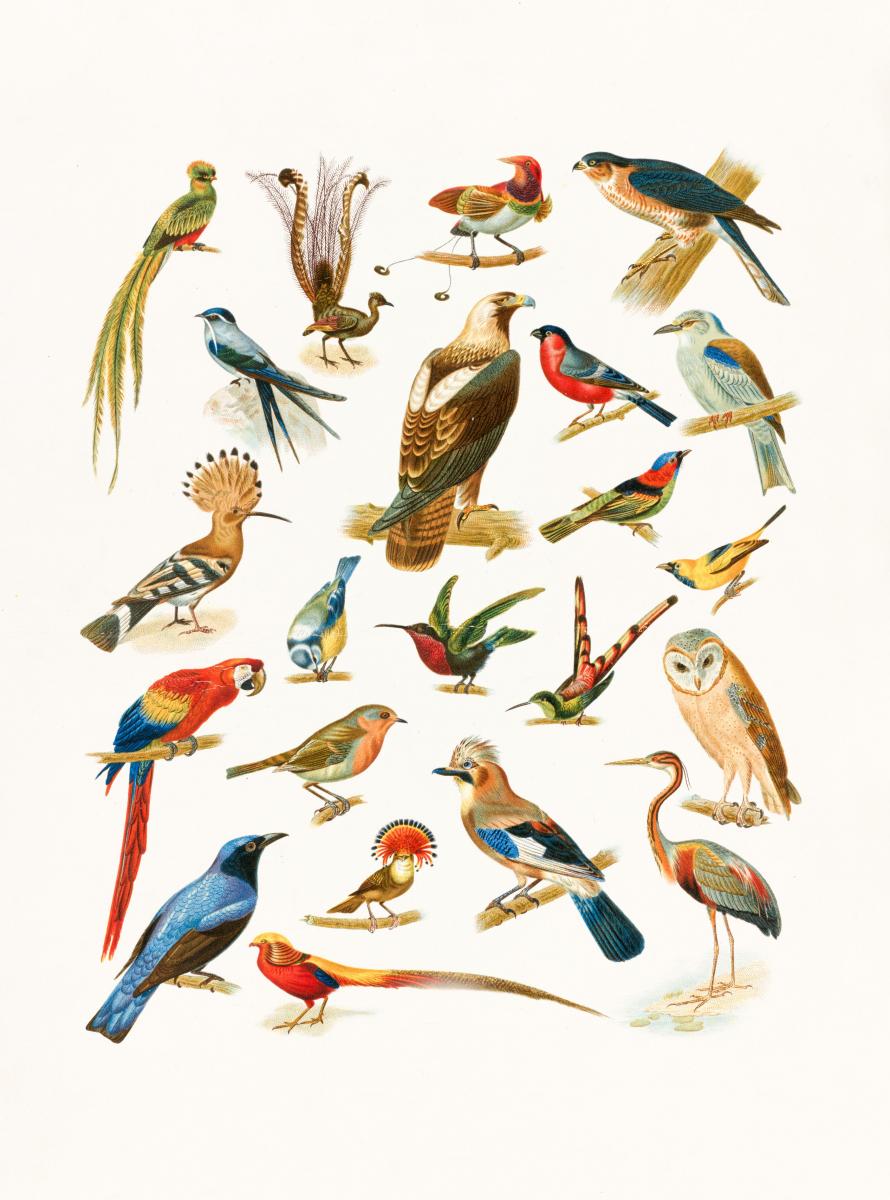
A Poem About Joy:
In this lesson plan, inspired by Ross Gay's "Sorrow Is Not My Name," Teré Fowler-Chapman asks young poets to come up with a list of things that bring them joy and then write a poem inspired by one of the items on that list. The writing exercise, which is a fantastic way to bring social-emotional learning into the classroom, is preceded by a conversation on Gay's poetics and on how joy can exist even in times of sorrow.
Personal Migrations:
Saraiya Kanning, inspired by Wang Ping's "Things We Carry on the Sea," asks young writers to, "contemplate how migration has played out in their own lives, including the lives of their families." This multi-part lesson plan includes a word association game, a discussion of Ping's poem, and a group poem in which students answer the question, "What sort of things have been carried across land, sea, or even across time?" collaboratively. After this, they write their own individual poems, using a series of questions to jump start their creativity, and then craft art pieces using popsicle sticks, pipe cleaners and/or puff paint to trace paths across the surface of their chosen canvas (Kanning used cake board!). This lesson can be shortened or spread out over class periods as part of a unit on immigration and migration.
Rare Bird Erasure:
"Erasure poems use words from another source to create a new poem," Saraiya Kanning writes in this lesson plan, which uses the field guide Rare and Elusive Birds of North America as a source text from which young writers create their own pieces (although you're welcome to use any book you'd like!). Each student receives a photocopied page from the book and goes on a "treasure hunt," selecting 5-10 words that in some way connect to one another. After creating their erasure poem, students can decorate the page with art materials to "create images, patterns, or designs around the words." This lesson plan includes a note on modifications for student with visual impairments.
Titles: Art on their Own:
So often in creative writing, the titling process is overlooked but important: as Sophie Daws says, "Writing a title can feel like putting the cherry on top of your great poem or it can feel like walking on eggshells, where the wrong title could ruin the whole poem and you just can’t come up with the right one!" This lesson plan, drawn from her high school zine residency, uses six prompts to offer a guided approach to coming up with a title for a finished project, from one that asks students to write down their favorite line to another that encourages them to think of how a title can add another tone or angle to their work.
Found Art Handmade Books:
Taylor Johnson bridges creative writing and visual art in this lesson plan, which focuses on crafting handmade books from recycled materials. Johnson suggests using everything from old postcards to yarn to insect wings to create a publication that's truly one of a kind. As far as words go, students can either add something they've previously written to their books whole cloth or cut up bits of their old writing and "remix" it. After the books are done, Johnson suggests creating a classroom library or exhibit for students to browse one another's books.
Image from the Boston Public Library.
Category:
Tags: .
- writing the community
- Share full article
Advertisement
Supported by
Our 2020-21 Writing Curriculum for Middle and High School
A flexible, seven-unit program based on the real-world writing found in newspapers, from editorials and reviews to personal narratives and informational essays.

Update, Aug. 3, 2023: Find our 2023-24 writing curriculum here.
Our 2019-20 Writing Curriculum is one of the most popular new features we’ve ever run on this site, so, of course, we’re back with a 2020-21 version — one we hope is useful whether you’re teaching in person , online , indoors , outdoors , in a pod , as a homeschool , or in some hybrid of a few of these.
The curriculum detailed below is both a road map for teachers and an invitation to students. For teachers, it includes our writing prompts, mentor texts, contests and lesson plans, and organizes them all into seven distinct units. Each focuses on a different genre of writing that you can find not just in The Times but also in all kinds of real-world sources both in print and online.
But for students, our main goal is to show young people they have something valuable to say, and to give those voices a global audience. That’s always been a pillar of our site, but this year it is even more critical. The events of 2020 will define this generation, and many are living through them isolated from their ordinary communities, rituals and supports. Though a writing curriculum can hardly make up for that, we hope that it can at least offer teenagers a creative outlet for making sense of their experiences, and an enthusiastic audience for the results. Through the opportunities for publication woven throughout each unit, we want to encourage students to go beyond simply being media consumers to become creators and contributors themselves.
So have a look, and see if you can find a way to include any of these opportunities in your curriculum this year, whether to help students document their lives, tell stories, express opinions, investigate ideas, or analyze culture. We can’t wait to hear what your students have to say!
Each unit includes:
Writing prompts to help students try out related skills in a “low stakes” way.
We publish two writing prompts every school day, and we also have thematic collections of more than 1,000 prompts published in the past. Your students might consider responding to these prompts on our site and using our public forums as a kind of “rehearsal space” for practicing voice and technique.
Daily opportunities to practice writing for an authentic audience.
If a student submits a comment on our site, it will be read by Times editors, who approve each one before it gets published. Submitting a comment also gives students an audience of fellow teenagers from around the world who might read and respond to their work. Each week, we call out our favorite comments and honor dozens of students by name in our Thursday “ Current Events Conversation ” feature.
Guided practice with mentor texts .
Each unit we publish features guided practice lessons, written directly to students, that help them observe, understand and practice the kinds of “craft moves” that make different genres of writing sing. From how to “show not tell” in narratives to how to express critical opinions , quote or paraphrase experts or craft scripts for podcasts , we have used the work of both Times journalists and the teenage winners of our contests to show students techniques they can emulate.
“Annotated by the Author” commentaries from Times writers — and teenagers.
As part of our Mentor Texts series , we’ve been asking Times journalists from desks across the newsroom to annotate their articles to let students in on their writing, research and editing processes, and we’ll be adding more for each unit this year. Whether it’s Science writer Nicholas St. Fleur on tiny tyrannosaurs , Opinion writer Aisha Harris on the cultural canon , or The Times’s comics-industry reporter, George Gene Gustines, on comic books that celebrate pride , the idea is to demystify journalism for teenagers. This year, we’ll be inviting student winners of our contests to annotate their work as well.
A contest that can act as a culminating project .
Over the years we’ve heard from many teachers that our contests serve as final projects in their classes, and this curriculum came about in large part because we want to help teachers “plan backwards” to support those projects.
All contest entries are considered by experts, whether Times journalists, outside educators from partner organizations, or professional practitioners in a related field. Winning means being published on our site, and, perhaps, in the print edition of The New York Times.
Webinars and our new professional learning community (P.L.C.).
For each of the seven units in this curriculum, we host a webinar featuring Learning Network editors as well as teachers who use The Times in their classrooms. Our webinars introduce participants to our many resources and provide practical how-to’s on how to use our prompts, mentor texts and contests in the classroom.
New for this school year, we also invite teachers to join our P.L.C. on teaching writing with The Times , where educators can share resources, strategies and inspiration about teaching with these units.
Below are the seven units we will offer in the 2020-21 school year.
September-October
Unit 1: Documenting Teenage Lives in Extraordinary Times
This special unit acknowledges both the tumultuous events of 2020 and their outsized impact on young people — and invites teenagers to respond creatively. How can they add their voices to our understanding of what this historic year will mean for their generation?
Culminating in our Coming of Age in 2020 contest, the unit helps teenagers document and respond to what it’s been like to live through what one Times article describes as “a year of tragedy, of catastrophe, of upheaval, a year that has inflicted one blow after another, a year that has filled the morgues, emptied the schools, shuttered the workplaces, swelled the unemployment lines and polarized the electorate.”
A series of writing prompts, mentor texts and a step-by-step guide will help them think deeply and analytically about who they are, how this year has impacted them, what they’d like to express as a result, and how they’d like to express it. How might they tell their unique stories in ways that feel meaningful and authentic, whether those stories are serious or funny, big or small, raw or polished?
Though the contest accepts work across genres — via words and images, video and audio — all students will also craft written artist’s statements for each piece they submit. In addition, no matter what genre of work students send in, the unit will use writing as a tool throughout to help students brainstorm, compose and edit. And, of course, this work, whether students send it to us or not, is valuable far beyond the classroom: Historians, archivists and museums recommend that we all document our experiences this year, if only for ourselves.
October-November
Unit 2: The Personal Narrative
While The Times is known for its award-winning journalism, the paper also has a robust tradition of publishing personal essays on topics like love , family , life on campus and navigating anxiety . And on our site, our daily writing prompts have long invited students to tell us their stories, too. Our 2019 collection of 550 Prompts for Narrative and Personal Writing is a good place to start, though we add more every week during the school year.
In this unit we draw on many of these resources, plus some of the 1,000-plus personal essays from the Magazine’s long-running Lives column , to help students find their own “short, memorable stories ” and tell them well. Our related mentor-text lessons can help them practice skills like writing with voice , using details to show rather than tell , structuring a narrative arc , dropping the reader into a scene and more. This year, we’ll also be including mentor text guided lessons that use the work of the 2019 student winners.
As a final project, we invite students to send finished stories to our Second Annual Personal Narrative Writing Contest .
DECEMBER-January
Unit 3: The Review
Book reports and literary essays have long been staples of language arts classrooms, but this unit encourages students to learn how to critique art in other genres as well. As we point out, a cultural review is, of course, a form of argumentative essay. Your class might be writing about Lizzo or “ Looking for Alaska ,” but they still have to make claims and support them with evidence. And, just as they must in a literature essay, they have to read (or watch, or listen to) a work closely; analyze it and understand its context; and explain what is meaningful and interesting about it.
In our Mentor Texts series , we feature the work of Times movie , restaurant , book and music critics to help students understand the elements of a successful review. In each one of these guided lessons, we also spotlight the work of teenage contest winners from previous years.
As a culminating project, we invite students to send us their own reviews of a book, movie, restaurant, album, theatrical production, video game, dance performance, TV show, art exhibition or any other kind of work The Times critiques.
January-February
Unit 4: Informational Writing
Informational writing is the style of writing that dominates The New York Times as well as any other traditional newspaper you might read, and in this unit we hope to show students that it can be every bit as engaging and compelling to read and to write as other genres. Via thousands of articles a month — from front-page reporting on politics to news about athletes in Sports, deep data dives in The Upshot, recipes in Cooking, advice columns in Style and long-form investigative pieces in the magazine — Times journalists find ways to experiment with the genre to intrigue and inform their audiences.
This unit invites students to take any STEM-related discovery, process or idea that interests them and write about it in a way that makes it understandable and engaging for a general audience — but all the skills we teach along the way can work for any kind of informational writing. Via our Mentor Texts series, we show them how to hook the reader from the start , use quotes and research , explain why a topic matters and more. This year we’ll be using the work of the 2020 student winners for additional mentor text lessons.
At the end of the unit, we invite teenagers to submit their own writing to our Second Annual STEM writing contest to show us what they’ve learned.
March-April
Unit 5: Argumentative Writing
The demand for evidence-based argumentative writing is now woven into school assignments across the curriculum and grade levels, and you couldn’t ask for better real-world examples than what you can find in The Times Opinion section .
This unit will, like our others, be supported with writing prompts, mentor-text lesson plans, webinars and more. We’ll also focus on the winning teenage writing we’ve received over the six years we’ve run our related contest.
At a time when media literacy is more important than ever, we also hope that our annual Student Editorial Contest can serve as a final project that encourages students to broaden their information diets with a range of reliable sources, and learn from a variety of perspectives on their chosen issue.
To help students working from home, we also have an Argumentative Unit for Students Doing Remote Learning .
Unit 6: Writing for Podcasts
Most of our writing units so far have all asked for essays of one kind or another, but this spring contest invites students to do what journalists at The Times do every day: make multimedia to tell a story, investigate an issue or communicate a concept.
Our annual podcast contest gives students the freedom to talk about anything they want in any form they like. In the past we’ve had winners who’ve done personal narratives, local travelogues, opinion pieces, interviews with community members, local investigative journalism and descriptions of scientific discoveries.
As with all our other units, we have supported this contest with great examples from The Times and around the web, as well as with mentor texts by teenagers that offer guided practice in understanding elements and techniques.
June-August
Unit 7: Independent Reading and Writing
At a time when teachers are looking for ways to offer students more “voice and choice,” this unit, based on our annual summer contest, offers both.
Every year since 2010 we have invited teenagers around the world to add The New York Times to their summer reading lists and, so far, 70,000 have. Every week for 10 weeks, we ask participants to choose something in The Times that has sparked their interest, then tell us why. At the end of the week, judges from the Times newsroom pick favorite responses, and we publish them on our site.
And we’ve used our Mentor Text feature to spotlight the work of past winners , explain why newsroom judges admired their thinking, and provide four steps to helping any student write better reader-responses.
Because this is our most open-ended contest — students can choose whatever they like, and react however they like — it has proved over the years to be a useful place for young writers to hone their voices, practice skills and take risks . Join us!

IMAGES
VIDEO
COMMENTS
Learn six steps to plan and teach a fun and engaging Creative Writing class for high school students. Find out how to choose projects, assessments, lessons, and class structure based on your goals and stud…
Let’s dive into the ideas linked below to find inspiration you can use to engage middle and high school students. Here are six different posts containing creative lessons, resources, and activities to inspire secondary …
Creative writing lesson plans are here! Use these adaptable ideas for your middle school and high school language arts students.
Here are five lesson plans from the 2022-2023 school year for middle and high school students, from our Writing the Community teaching artists!
Discover 12 engaging lesson plans for teaching writing to secondary students. Boost their skills with practical and creative ideas. Read more now!
The curriculum detailed below is both a road map for teachers and an invitation to students. For teachers, it includes our writing prompts, mentor texts, contests and lesson plans, and...